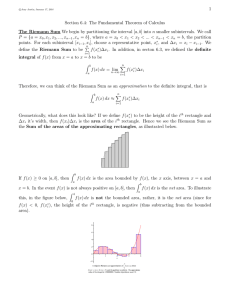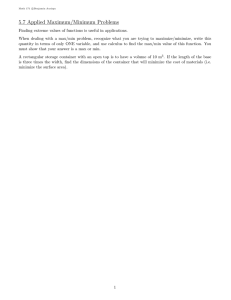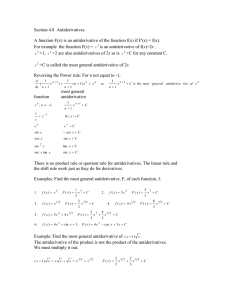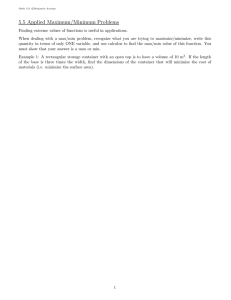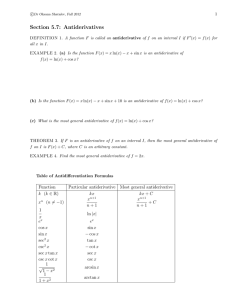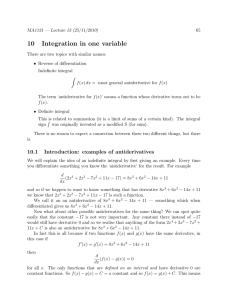Document 10418883
advertisement
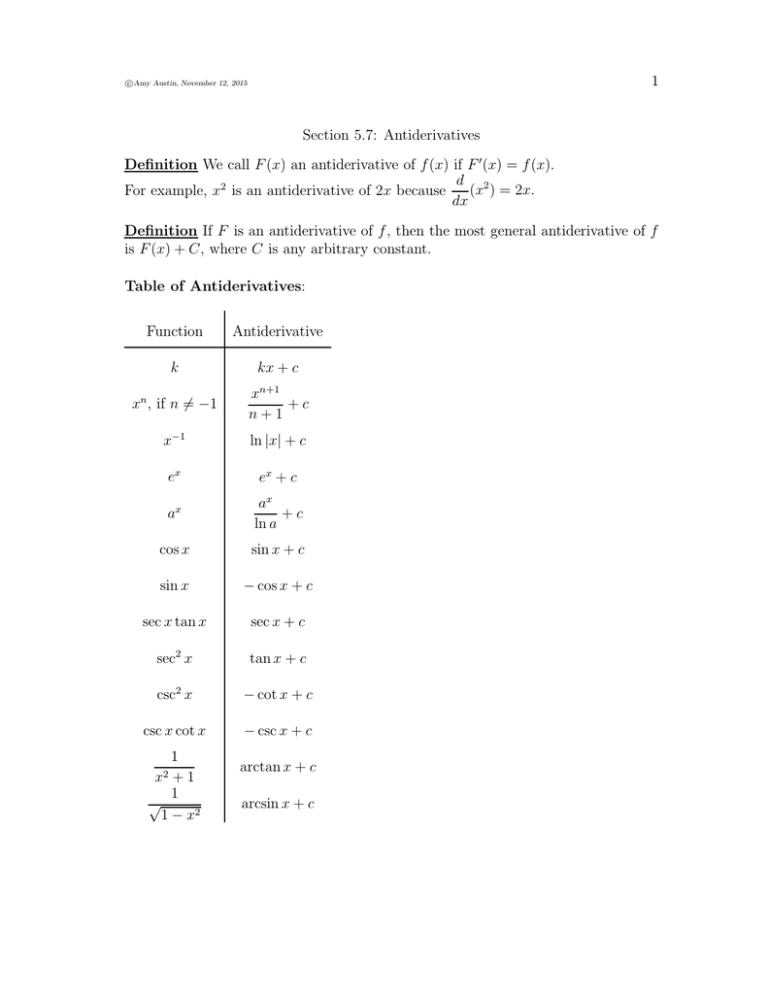
1 c Amy Austin, November 12, 2015 Section 5.7: Antiderivatives Definition We call F (x) an antiderivative of f (x) if F ′ (x) = f (x). d 2 (x ) = 2x. For example, x2 is an antiderivative of 2x because dx Definition If F is an antiderivative of f , then the most general antiderivative of f is F (x) + C, where C is any arbitrary constant. Table of Antiderivatives: Function Antiderivative k kx + c xn , if n 6= −1 xn+1 +c n+1 x−1 ln |x| + c ex ex + c ax ax +c ln a cos x sin x + c sin x − cos x + c sec x tan x sec x + c sec2 x tan x + c csc2 x − cot x + c csc x cot x − csc x + c 1 +1 1 √ 1 − x2 x2 arctan x + c arcsin x + c 2 c Amy Austin, November 12, 2015 EXAMPLE 1: Find the most general antiderivative. (i) f (x) = x3 − 4x2 + e (ii) f (x) = (iii) f (x) = √ 3 x2 − √ x3 x + 5x2 − 1 2x3 (iv) f (x) = ex + √ 4 + 5(1 − x2 )−1/2 2 1−x c Amy Austin, November 12, 2015 3 EXAMPLE 2: Given the graph of f passes through the point (1, 6) and the slope of its tangent line at (x, f (x)) is 2x + 1, find f (2). EXAMPLE 3: A particle is moving according to acceleration a(t) = 3t + 8. Find the position, s(t), of the object at time t if we know s(0) = 1 and v(0) = −2. EXAMPLE 4: Suppose the acceleration of an object at time t is given by a(t) = (cos ti) − 3j. Find the position vector function, r(t), if it is known that v(2) = i − j and r(0) = 0. c Amy Austin, November 12, 2015 4 EXAMPLE 5: If f ′′ (x) = x2 , f (1) = 2 and f (2) = 3, find f (x). EXAMPLE 6: A car braked with a constant deceleration of 40 feet per second squared, producing skid marks measuring 160 feet before coming to a stop. How fast was the car traveling when the brakes were first applied?

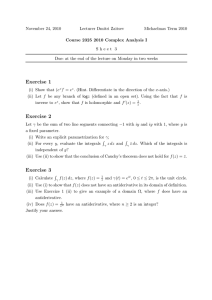
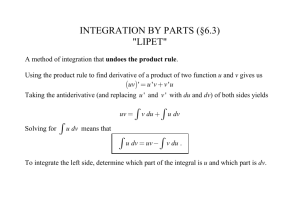
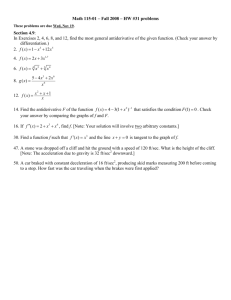
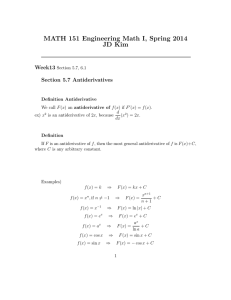
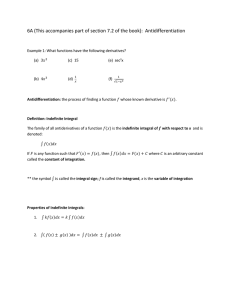
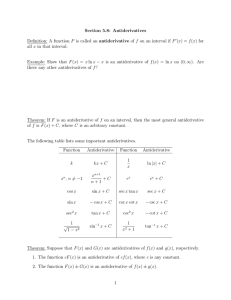
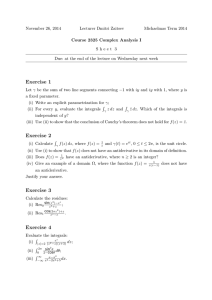
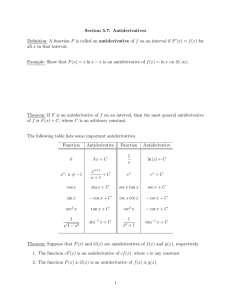
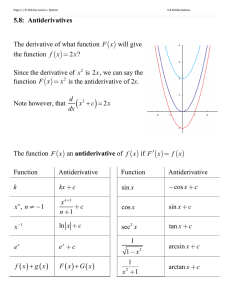
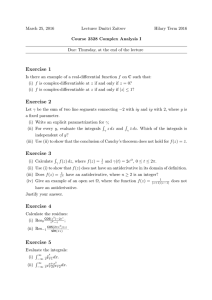
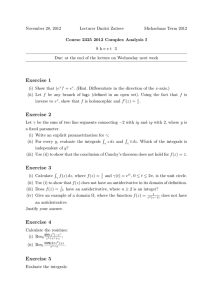
![Antiderivatives [7.5]](http://s2.studylib.net/store/data/009839726_1-71c8c3c8e7789734542b65fee1d9e6d4-300x300.png)
